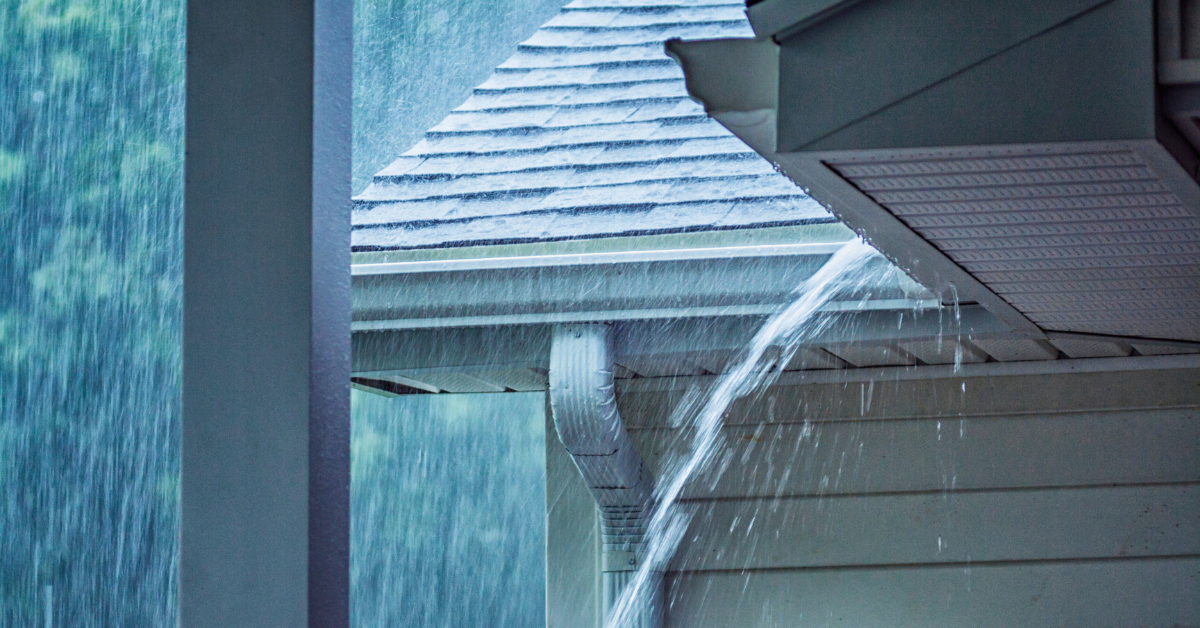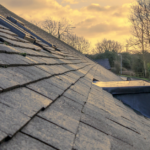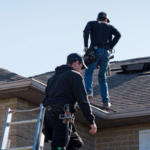Say you’re in the midst of doing house chores, and you notice a little puddle on the laundry room floor. So there’s a little drip in a room you don’t spend family time in. So what? It’s probably just a minor roof leak. It shouldn’t get worse, right?
WRONG!
Big problems don’t start big. They start as minor, barely-noticeable things that grow and grow until the problem is out of control. A forest fire can be started by a cigarette butt or gender reveal gone wrong. In the same vein, a big, expensive, and destructive roof problem generally can start as a leak that drips once every 30 seconds or so. But there are plenty of things you can do to prevent the baby roof leak from becoming a money pit. In this blog, we’ll go over the steps you should take when you have a leaking roof!
Contain the Leak
The first thing you’ll want to do is limit the damage caused by this aquatic annoyance. Grab a bucket, pot, or towel to catch it. This helps you prevent the water from soaking into your floors, furniture, or carpets.
Once you have something in place to catch the drips, it’s time to move any valuable items out of the way—computers, important papers, your Beanie Baby collection, and so on. The faster the leak is contained, the better your chances of minimizing (or even avoiding) long-term damage.
Identify the Source
Once you’ve gotten the leak under control, you need to figure out the exact source of the leaking roof. Be on the lookout for these telltale signs:
- Water stains on the walls or ceiling
- Sagging or bulging areas in your drywall
- Damp or moldy insulation in your attic
Assuming it’s safe to do so, investigate your attic—the room closest to your roof—thoroughly. Be on the lookout for wet spots, drips, or even daylight penetrating the roof. One important thing you should keep in mind throughout your inspection is that water can travel in some funky ways. The source of the leak may not be directly above the initial problem spot you noticed.
Minimize Interior Damage
Is your leak causing a bulge in your ceiling? More often than not, it’s a good idea to relieve some of that pressure! Set a bucket below the bulge and carefully puncture the lowermost part of the bulge. If this isn’t done, your ceiling may be at risk of collapsing under the weight of the water that’s collecting there.
Dry out damp areas by using a dehumidifier—if you don’t have one, a box fan will also work. The sooner you reduce moisture levels in the area of the leaking roof, the more likely you are to avoid mold and mildew in the future.
Temporary Fixes
If the weather decides to be nice and gift you with a rainless day, consider applying a temporary patch to your roof leak. Using a sturdy ladder and a companion to keep an eye on the process, carefully climb up onto your roof and give it enough TLC to hold it over until the professionals (us) are able to come provide a permanent remedy. This patch could consist of a tarp that you secure over the damaged area of your roof, roofing tape, or sealant.
Please keep in mind that while a temporary roof patch can help your leak situation, your own safety should always come first. Never climb up onto your roof during a thunderstorm or when surfaces are wet and slippery.
Call a Professional Roofer
Alright, now it’s time for us to step in. Up until now, the steps you’ve taken to address the roof leak are stopgaps to the permanent fix: professional roofers. If you truly want to keep your home damage-free, give us a call as soon as possible. Here’s what you can expect from our visit to your lovely abode:
- A thorough inspection of your roof to assess the extent of the damage
- A repair estimate with a detailed breakdown of the labor and costs
- Professional repairs carried out using quality materials
- Advice on whether a roof leak repair or a full roof replacement is needed (the latter is only recommended in cases of extreme damage)
- Preventative maintenance that reduces the risk of further leaks
Don’t Sleep on a Leaking Roof
To be clear, we mean that in both a metaphorical and literal sense. A roof leak isn’t something to be ignored. The longer you wait, the more expensive the repairs can become—and the more stressful the experience is likely to be. Whether your leak is an emergency or you just want to maintain your peace of mind, routine roof inspections are the ideal way to protect your home from leaks and their subsequent water damage. Get in contact with us and we’ll provide quality roof leak repair!















